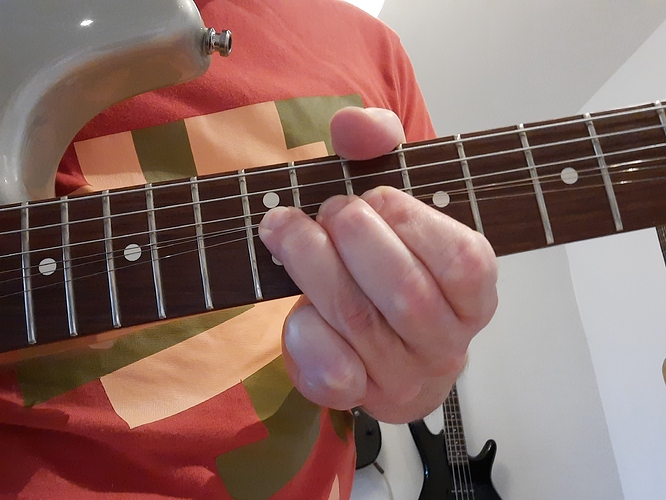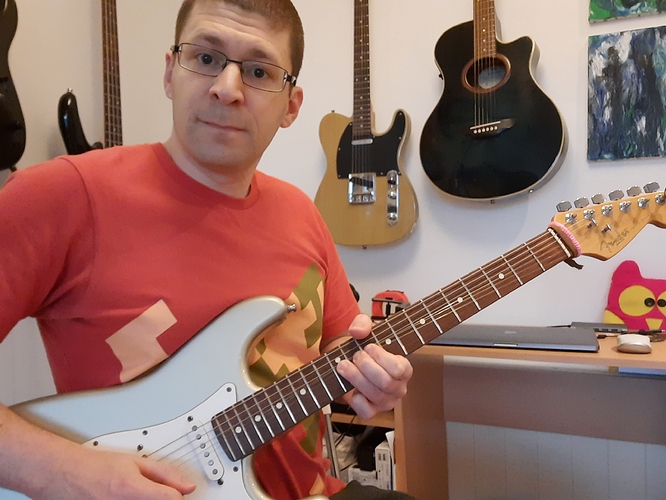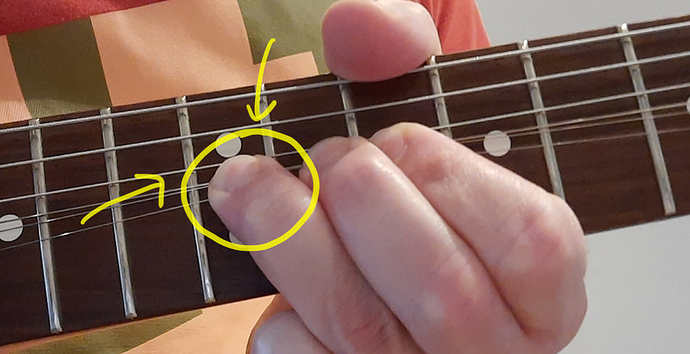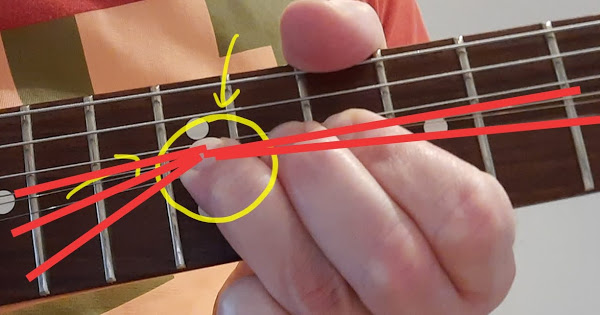But from a biomechanical perspective, the role of the supporting fingers is to distribute the workload of bending the string. If the bent string has only one “bend point” at the fretted note, then the supporting fingers aren’t bearing their share of the pressure.
The theoretically optimal spread of the pressure (in the case of one “fretting” finger plus two supporting fingers) might not involve each finger bearing exactly the same amount of pressure (since they aren’t all equally strong), but it would have each finger bearing at least some of the pressure. That means we would have three bend points that we could think of as the vertices of a triangle.
In order for the middle finger to be bearing any of the pressure, the middle finger vertex has to be offset a non-zero distance (on the “bendward” side) from the edge that joins the index vertex and the ring vertex. If the three vertices form a straight line (or the middle finger is offset in the other direction), then the string is only stretched across the index and ring, and the middle isn’t bearing any of the pressure.
In practice, this may nearly appear to be a straight line, but to the extent that it’s not actually a straight line, we should expect the vertices to outline a triangle that satisfies the condition above.










